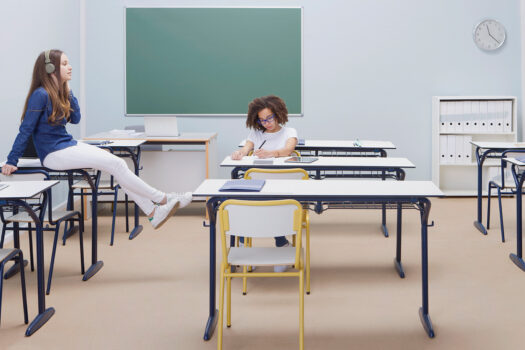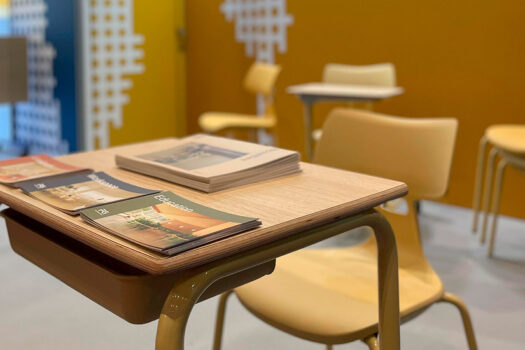Manuel García Vuelta is a Senior Industrial Engineer with more than 30 years of experience and, through ArtiGraf Informática, he supports teacher training by using motivating interactive tools such as Interactive Whiteboards, Portable Interactive Whiteboards, and Response Systems for Continuous Evaluation, among others.
We wanted to hear the opinion of this expert in interactive technologies in the classroom and professor of the Master’s program at the Rey Juan Carlos University (URJC) about the technological advances in education, their integration into the classroom, and his recent visit to SIMO Educación in Madrid, where we had our own stand this year.
Without teachers or professors, there is no education. In your experience in teacher training through the use of new technologies, in which areas is it crucial for teachers to receive training in order to face the challenges posed by new education systems?
Manuel García: It is clear that the teacher must have the ability to convey knowledge by capturing the attention of the students and motivating them.
This is the first key to success. The second key is that they must be aware that, given the continuous technological advances being incorporated into businesses, official organizations, or any future activity of their students, they must continue their training in integrating ICTs into their teaching methods.
To do this, it is crucial to tackle this “mountain” in stages. The first stage is hardware, which the relevant body must incorporate into the classrooms of the educational institution. The second stage is choosing the right software and understanding how it works. The third stage is receiving motivating training, both in person and online, and finally, the teacher must know that they can find help whenever they face a technical difficulty.
If these stages are covered in such a way that the teacher finds it easy to use the hardware and software, that it is adaptable to their subject, and that the teacher feels it is pedagogically useful, the result will be motivating both for the teacher and the students, and the outcomes will be very positive.
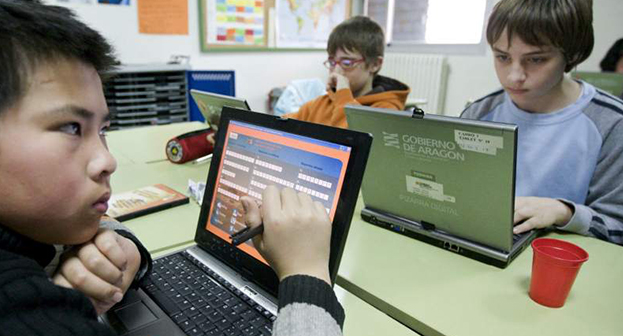
(Image from the article “The digital divide between teachers and students is widening” in 20minutos)
2) What is the fundamental contribution of new technologies in the classroom, at a time when new educational trends focus on concepts such as education in values, project-based learning, and multiple intelligences?
Manuel García: The main contribution of new technologies is that, when used correctly, they are highly motivating for students and increase their attention and interaction, improving their results.
One must be aware that the hardware and software used are simply “tools,” but they greatly enhance the possibilities for bidirectional information transmission if used correctly, and they can be detrimental if the teacher does not know how to use them properly due to a lack of training or skepticism about their potential.
3) How should the furniture in these classrooms integrate new technological tools?
Manuel García: It depends on each case, but in the new trends of team work, it is important to have tables around which several students can sit to work as a team, with a Portable Interactive Whiteboard (PDiP) at each table or two or three PDiPs in the classroom to move from table to table, all connected to the teacher’s computer. This way, they can work in teams and compete according to the teacher’s instructions.
On the other hand, it is a very economical solution, as it is enough to have a whiteboard or a roll-up screen on which the computer image is typically projected using a video projector, or a flat TV or large-format monitor can replace a wall-mounted PDi, which requires the student or teacher to stand in front of the class.
This type of team work tables and whiteboards with a matte surface are the best integration with PDiPs to give both teachers and students more flexibility and save the educational institution’s budget.
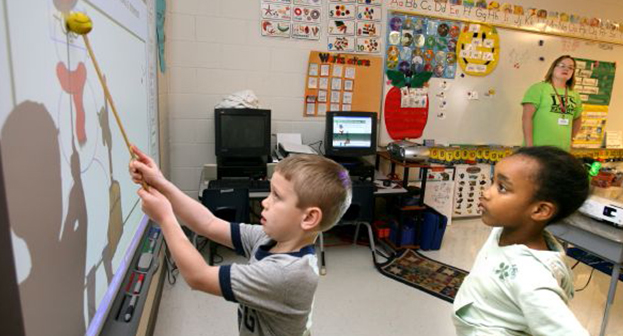
4) How should, in your opinion, a model classroom be?
Manuel García: In addition to the characteristics I have already explained, it is important to have internet connectivity that allows for information search, the possibility of combining in-person classes with real-time distance learning, and the “flipped classroom” concept.
Furthermore, the use of the Interactive Whiteboard (IWB) allows mobility and helps any student with limited mobility. It should also encourage the incorporation of Digital Continuous Assessment systems based on remote controls or on the students’ smartphones, tablets, or computers.
5) What advice could you offer to schools and teachers who are considering reconfiguring a classroom by incorporating new technologies for the upcoming school year?
Manuel García: The first piece of advice is that the management of the educational center must be aware that budget limitations are not an obstacle to incorporating ICT if affordable solutions are chosen that not only do not reduce possibilities but can actually increase them.
An example would be incorporating the use of PDiPs and Digital Continuous Evaluation Systems based on mobile peripherals.
A second recommendation would be to provide motivating training to teachers that is simple, adaptable, and pedagogically useful.
And also to incorporate school furniture that promotes teamwork. Additionally, they should have real-time support for teachers in case of any doubts or problems with the hardware or software.
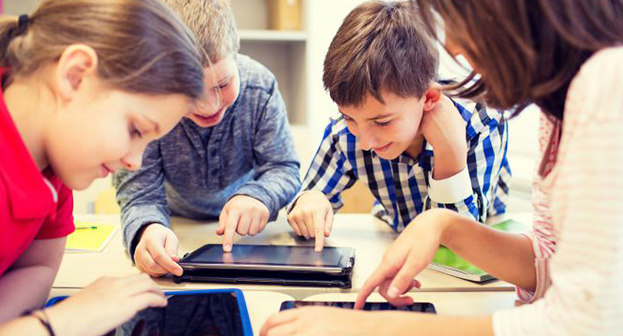
(Image from the article “New technologies are revolutionizing the classroom” in Cinco Días.)
6) Recently, you attended SIMO Education, the event dedicated to technology focused on education, which was recently held in Madrid, and where Federico Giner had its own stand. What new features or aspects caught your attention the most during the fair?
Manuel García: Positively, the incorporation of robotics and programming as a teaching process based on gamification, together with 3D printing. Also, cloud platforms or private servers.
Additionally, progress continues in the offer of Interactive Whiteboards based on Interactive Monitors, although it is a more expensive and less flexible solution compared to the previously mentioned incorporation of PDiPs.
The adaptation of furniture to new trends is another positive detail I observed at SIMO Education.


